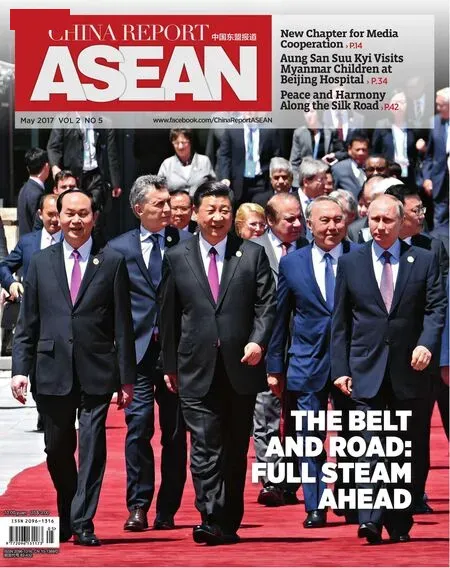‘Shandong Vista’ Along the Belt and Road
2017-07-18By
By
‘Shandong Vista’ Along the Belt and Road
ByLuan Xiaohui
Coastal province's advantages give it unique role as catalyst for the further implementation of the Initiative
Shandong Province is situated on China’s eastern coast. Shandong’s location at the intersection of trading routes both ancient and modern —linking in all directions — has helped to cement its role as an economic center.
Since the Belt and Road Initiative was put forward in 2013, Shandong, an important intersection of the Silk Road Economic Belt and 21st-Century Maritime Silk Road, has been working to formulate an action plan complete with its own characteristics. Now, a spatial layout featuring “a cluster of seven coastal cities, six international economic cooperation corridors, two cities (Jinan and Qingdao) as the driving force and wide support from main node cities, various cooperation zones and major engineering projects” has taken shape.
Windows of Opportunity
In the midst of comfortable spring weather, the Netherlands-China (Qingdao) Economic and Trade Cooperation Conference was held in Qingdao on April 10. The Port of Qingdao is the seventh busiest port in the world by total cargo volume, while the Netherlands, which is home to the Port of Rotterdam, is another place connected to the Belt and Road. Cooperation between the Netherlands and Qingdao demonstrates the Silk Road Spirit that is “peace and cooperation, openness and inclusiveness, mutual learning and mutual benef i t.”
Qingdao, a main node of the new Eurasian Land Bridge Economic Corridor and a strategic pivot city of maritime cooperation, has been working at full tilt to integrate itself into the construction of the Belt and Road. Qingdao opened a railway line connected to ASEAN, which starts at Qingdao, passes through Dongguan in Guangdong Province, Pingxiang in Guangxi Zhuang Autonomous Region and finally heads onward to Vietnam. Qingdao has established sister city partnerships with 67 cities in more than 30 countries and regions. Qingdao has also set up a key project portfolio relating to economic and trade cooperation with countriesalong the Belt and Road.
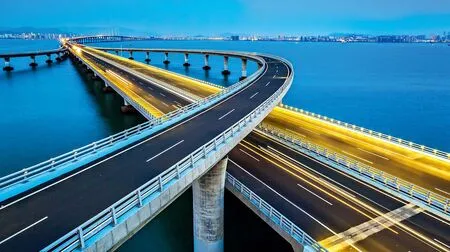
The Qingdao Gulf Bridge is the world’s longest sea bridge.
Yantai, located in northeastern Shandong, has made bold steps forward in the strategy of “going global”. The city strives to establish overseas economic and trade cooperation zones and encourages Yantai’s enterprises with advantages to go abroad, where there are abundant resources and broad prospects for cooperation.
Li Guangjie, director of the Shandong Academy of Social Sciences’International Economics Research Institute, explained that,“Shandong, as a maritime strategic pivot of the Belt and Road, has actively integrated into the promotion and implementation of the Belt and Road Initiative through the selection of various entry points. It will inevitably bring Shandong’s advantages in terms of geographic position, economy and culture into full play so as to optimize its industries’international layout and upgrade its manufacturing sector’s global quality, which is conducive to tapping into the development potential of the open economy in Shandong.”
Expanding Global Reach
Trains fi lled with containers whistle forward across the Eurasian continent, connecting two distant continents on a single track. The China Railway Express brings new vitality to the ancient Silk Road which once acted as a bridge for friendly exchanges between China and the West.
According to Jinan Railway Bureau statistics, in 2016 Shandong dispatched a total of 279 trains bound for Asia and Europe with a combined 9,070 train cars carrying 299,000 tons of goods, increases of 162.8 percent, 63.3 percent and 128.8 percent respectively compared with 2015.
Linyi, in southern Shandong, has constructed a base in Hungary called the the Hungary Central European Trade and Logistics Cooperation Zone, allowing it to facilitate Chinese enterprises’development overseas. The zone is not only China’s fi rst overseas trade and logistics cooperation zone, but also the fi rst national-level overseas economic and trade zone that China has set up in Europe.
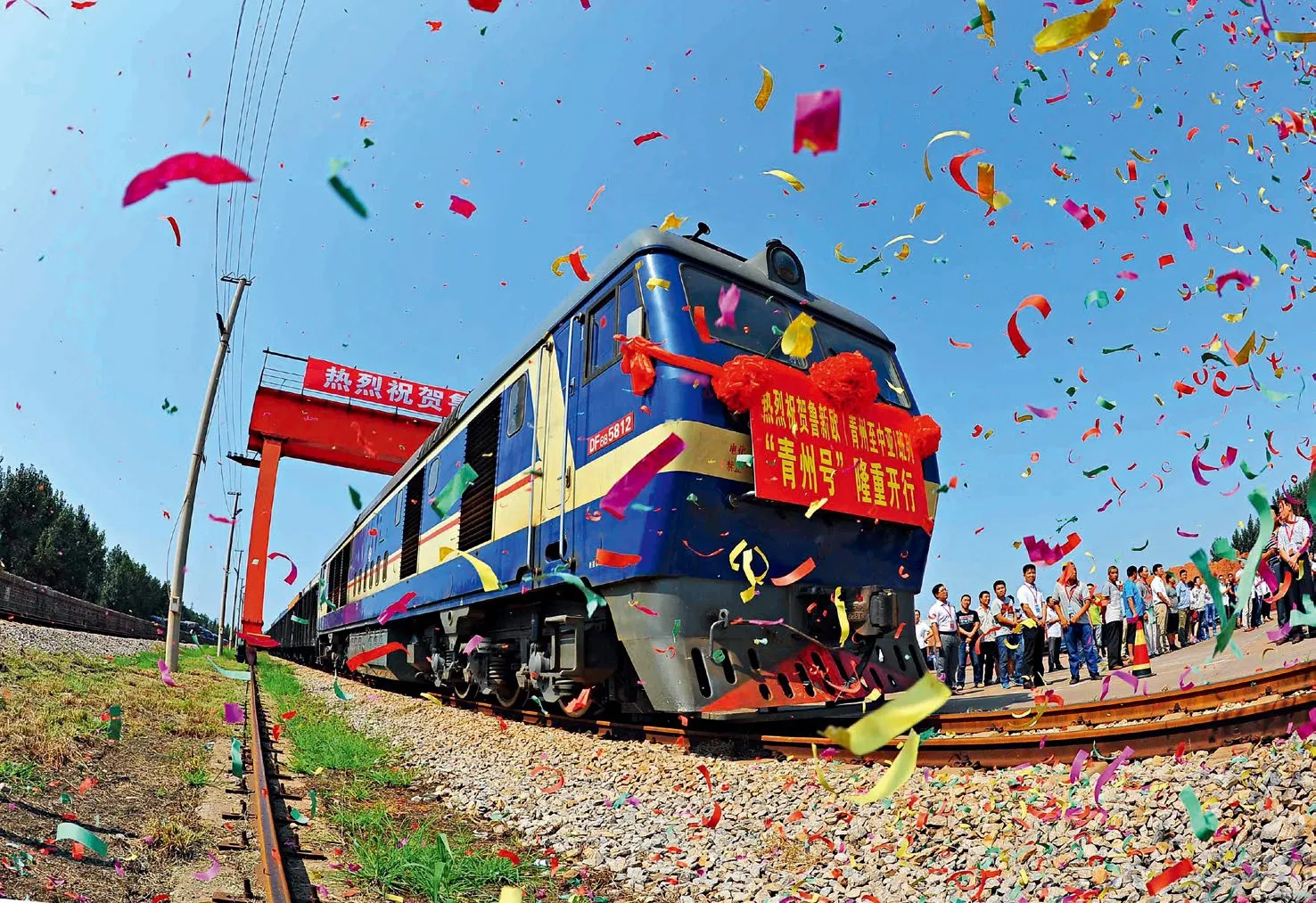
Above left: A China-Central Asia cargo train setting out from Weifang, central Shandong Province, bound for Alma-Ata, Kazakhstan, on Aug. 28, 2015.
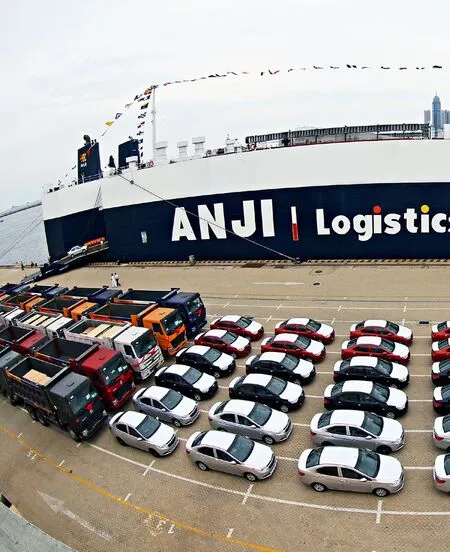
Above center: Cars are one of the many products exported via ship from the port of Yantai.
The groundbreaking ceremony of the Pakistan (Gwadar) China Linyi Trade City Project was held on May 7, 2016, which was seen as a new dawn in facilitating Linyi’s links to the China-Pakistan Economic Corridor. The Trade City is another solid step forward in ef f orts to establish Linyi overseas markets in the world.
Win-Win Mindset
Uzbekistan, meanwhile, has also played a key role in cooperation with Shandong Province. Kerui Petroleum, headquartered in Dongying on Shandong’s northern coast, signed a deal to help Uzbek companies gain greater access to funding in May 2016. Kerui and its Uzbek partners have plans to build 46 gas stations.
Alimov Yorkinjon Nasimjonovich, a 38-yearold business representative with Kerui, praised the entry of Chinese companies into Uzbekistan.
“Kerui Petroleum enjoys a good reputation in our country,”he said.
Wu Yuefei, an office manager at Kerui Petroleum’s branch in Uzbekistan, said that upon completion, the project will create 1,000 jobs for local residents and help Uzbekistan upgrade its energy industry.
A coal-f i red power plant in Sahiwal, Punjab Province in Pakistan, jointly built by the Shandong branch of Huaneng Corporation and Shandong Ruyi Technology, has received total investment of US$1.8 billion to date. The power plant is expected to be connected to the grid and begin generating power in June.
The Sahiwal power plant is solely constructed and operated by the Chinese side, which also leads the entire project. The power plant is also one of priority projects in promoting the China-Pakistan Economic Corridor.
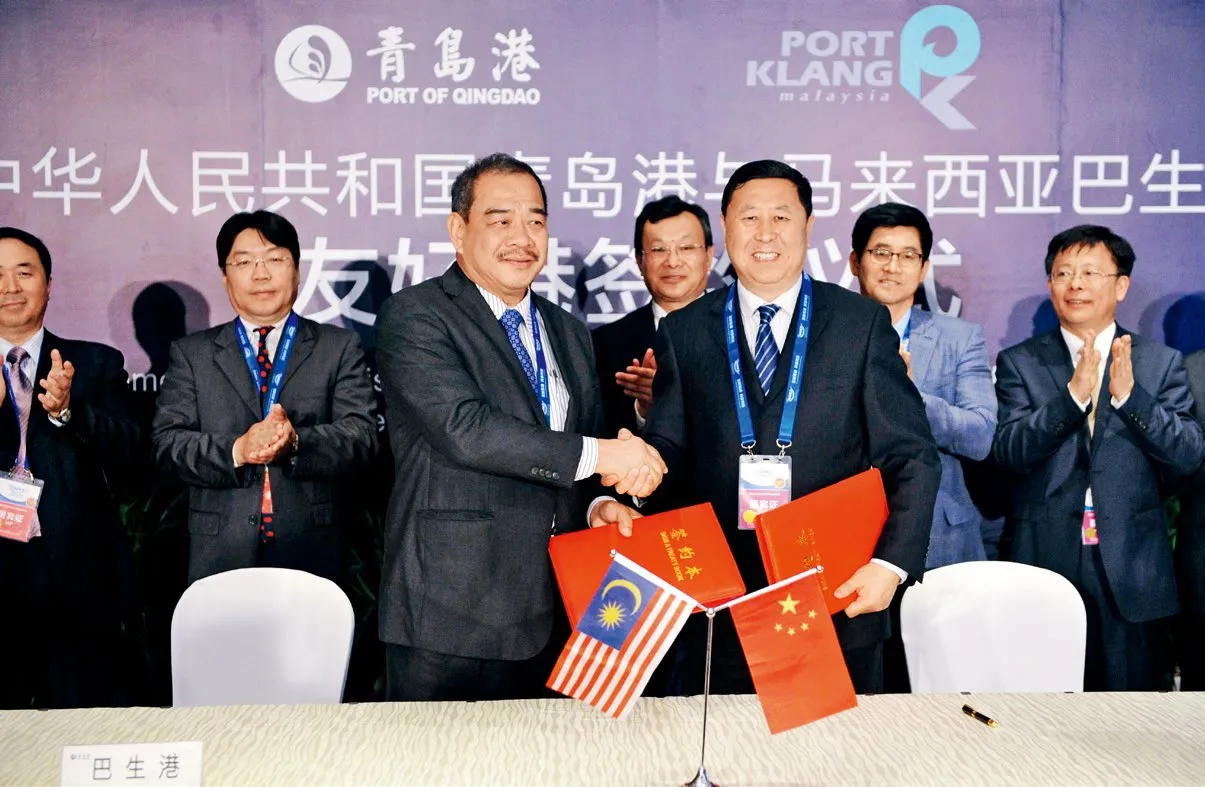
The ports of China, Malaysia, the United Arab Emirates (UAE), South Korea and Pakistan officially established the East Asia Seaport Alliance in Qingdao on July 25, 2016.
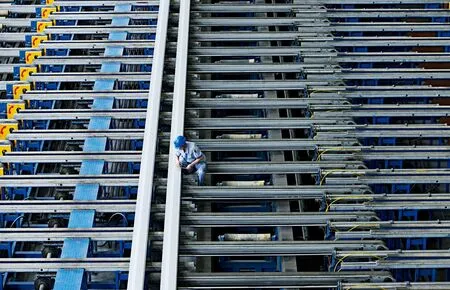
A worker with the Shandong Yuhang Special Alloy Equipment Company inspects aluminum intended to be used for manufacturing train cars.
On Dec. 28, 2016, the Shandong Branch of China Export & Credit Insurance Corporation issued buyer credit insurance for the project. Led by the Shandong Branch of the Industrial and Commercial Bank of China, the Bank of China, the Agricultural Bank of China and China Construction Bank teamed up to form a consortium to jointly issue medium and long term loans totaling US$1.44 billion, with a loan term of 15 years. So far, the Sahiwal power plant project has already received loans of US$1.08 billion. After the Sahiwal power plant begins generating power, it will greatly alleviate power shortages in Punjab Province and promote local employment, as well as improve people’s living conditions in Pakistan.
More than 1,000 years ago, the ancient Silk Road was home to bustling trade. Today, it will take on a new form, as the Belt and Road Initiative is linking the economies and cultures of dif f erent countries into one seamless image.
Links

‘A cluster of seven coastal cities’
Relying on the Maritime Silk Road, coastal cities and ports in Shandong Province cooperate with cities and ports in countries along the Belt and Road to promote the interests of the overall community. Based on maritime economic zones and Sino-foreign cooperation zones, a cluster of seven coastal cities for maritime cooperation is taking shape.

‘Six international economic cooperation corridors’
All-round cooperation will be conducted based on industrial parks and projects along the New Eurasian Land Bridge as well as the China-Mongolia-Russia, China-Central Asia-West Asia, China-Indochina Peninsula, China-Pakistan and Bangladesh-China-India-Myanmar economic corridors, with focus placed on the unique role of the New Eurasian Land Bridge in the construction of the Silk Road Economic Belt.

‘Core cities as the driving force’
The advantages of Jinan, the provincial capital, make it the core of the central and western regions in participation in the construction of the Belt and Road. Taking the advantage of its opening up, Qingdao will play a leading role in the Shandong Peninsula Oceanic Economic Zone and help to drive the opening up and development of Shandong Province.

‘Support from main node cities, various cooperation zones and major engineering projects’
Main node cities in Shandong Province, various cooperation zones at and above the provincial-level and major engineering projects provide strong support for the construction of the Belt and Road.
